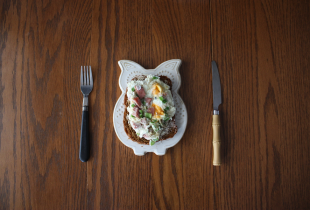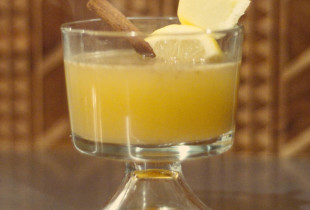By Natalie DeYoung
When I find the time, I like to bake bread. I don’t have a bread maker, and yes, I have reasonable access to top-quality bakeries where I could buy any variety of this culinary staple, but there’s something about baking bread that continually beckons me back to my floured pastry mat.
Baking bread has been a trial-and-error activity: a lengthy, on-again-off-again love affair. I first learned the joys of producing one’s own bread in the fifth grade, when a class project teaching us something about homesteading Americans yielded one tiny, gloriously sweet loaf of my very own. I have never forgotten the taste of that bread, yeasty and obviously a product of too much sugar. Sitting by my “homestead,” a crafty lantern made from tin can scraps poked with illuminative holes, I discovered through a communal taste-test that I had indeed baked the best tasting bread of the day, excess of sugar notwithstanding. I didn’t bake any bread again for a long time, save for the occasional loaf of Irish soda bread I made in a slight nod to part of my ethnic heritage on St. Patrick’s Day.
Now, however, I find myself called back to the kitchen when I want to spur my creativity. For someone who leads such a cerebral, metropolitan existence, an instinctive and meditative activity like baking can unclog mental blocks more efficiently than, say, an hour of mindless Internet surfing. It’s a focused intellectual break that provides a blank canvas for original thoughts, firing up my synapses in the same way gardening or jogging does, but with something scrumptious to eat as a result. Thus, every few weeks I return to the kitchen with a new variety of bread to conquer.
In addition to fostering creativity, baking has brought about another unexpected benefit: connection. While baking, I somehow feel bonded with other women on a larger scale. My grandmothers, who certainly didn’t need to bake in the 1950’s world of Wonder Bread, did on occasion to keep traditions of crumbly beer bread and sticky orange rolls alive. Baking can remind you of who you are, and from where you came.
Yes, there is some inexplicable communion in baking bread. Such a universal experience, one of the few I share with generations past. Instead of my neat, poorly ventilated city kitchen, I can imagine standing over an iron prairie stove, or in front of a stone oven on the moorland – still, I would be baking bread. Perhaps my bread wouldn’t look the same: dark, grainy loaves sweetened with honey or molasses instead of table sugar. Certainly I bake with the convenience of running water and a pilot light in the oven, but it still remains as primitive an activity as running, sex or childbirth.
So yes, I could pop on down to my adorable local bakery and pick up a loaf made that very morning – and because I live in Los Angeles, I could get bread from any ethnic tradition I so desire. Anpan and Borodinsky are not out of reach in my neighborhood. And yet…
And yet…
I return to the kitchen to compile about 50 cents worth of ingredients, and indulge once again in the alchemy that is baking bread.
My Favorite Irish Soda Bread
Seeing as my mother’s family is partly Irish American and has lived in this country for generations, of course our version of Irish soda bread is not the most authentic of recipes. That said, I have experimented with quite a few recipes, and this one is my favorite – an amalgam of several I have tried over the years. While a sweeter, more American version of Irish soda bread can be delicious, I prefer mine to taste less like a dessert and more like bread.

Also, if you are at all like me and never have buttermilk on hand, simply add a tablespoon of vinegar to the milk and let it set for ten minutes.
2 ¼ cups all-purpose flour
1 teaspoon baking powder
½ teaspoon baking soda
1 tablespoon sugar
3 tablespoons butter
2 eggs, each beaten separately
¾ cup buttermilk

Preheat the oven to 375º. Sift 2 cups of the flour (setting aside the final ¼ cup) and the rest of the dry ingredients in a medium sized bowl. Cut in the butter until you have a coarse crumb mixture.
In a separate, larger bowl, mix together one of the beaten eggs with the buttermilk.
Add the dry ingredients gradually until it is just mixed. If the dough is too wet, add the remaining flour a bit at a time. Make certain the ingredients are mixed, but do not over knead. Kneading soda bread for longer than a minute or so renders it hard and inedible.

On a greased baking sheet, shape the dough into a loaf about six inches around. Score the top in a cross shape. This step is optional, but you can brush one beaten egg on top of the loaf, which will aid in the browning and enhance the bread’s visual appeal.
Bake from 35 to 40 minutes, until the top is brown and an inserted toothpick comes out clean. Slice, butter, and enjoy!



